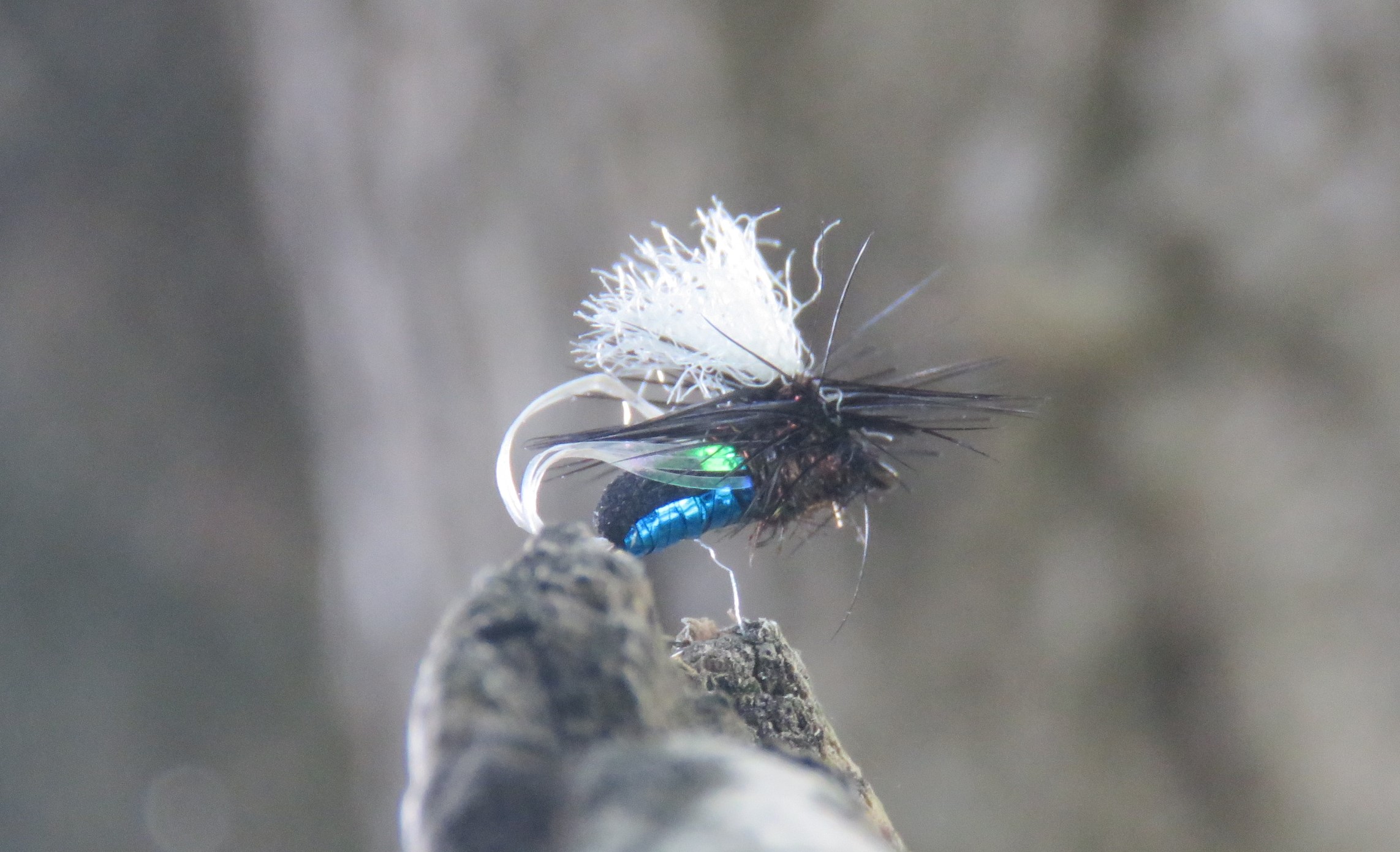Southland Reel Life January 2019
- Southland
- 30/01/2019
Three‘must have'summer dry flies
Last month, I talked about a few spinning lures that should be in every angler’s tackle box.
This month, I want to mention a few 'must have' summer dry fly patterns and at the top of my list is the blue blowfly.
Above right: An angler trying his luck on the upper Mataura.

The humble blowfly
The humble blowfly imitation is my go-to summer dry fly for fishing around Southland.
The blowfly in size 14 or 16 is a stand out summer fly as it's highly visible to trout, effective in most conditions and has great buoyancy.
This floatation means the blowfly can be fished very effectively in tandem with a small nymph tied off the shank of the hook.
I am often surprised at just how far a trout will move to take a blowfly and in fact, they will often lift off the bottom of the river to take one.
Then next up there is the cicada.
Cicada fly.
Cicadas are around from January onward and trout are quick to cue into them as they're large and energy dense.
Like the blowfly, the cicada is highly visible to trout and fishes well in tandem with a small nymph.
If you can hear cicadas chirping away while you are fishing, a cicada imitation is well worth a try.
Then finally, there's the willow grub.
There are a few different willow grub patterns, and it's likely the exact pattern is unimportant.
The key however, is to be able to consistently put the willow grub pattern right in front of the trout’s nose.
Because it can be so hard to see the willow grub fly once cast out, it's useful to team up your willow grub with a blowfly.
Tie your blowfly on first, then tie 15cm of tippet off the shank of the blowfly and attach you willow grub imitation.
If you see any rise near your blowfly it's time to strike!
Cohen Stewart, Southland Fish & Game Officer